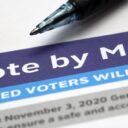In a new survey, Gallup found Americans’ confidence in newspapers fell slightly to 23% this year, from 25% in 2012 and 28% in 2011. However, the percentage of Americans saying they have “a great deal” or “quite a lot” of confidence in newspapers has been generally trending downward since 1979, when it reached a high of 51%.
Newspapers continue to rank near the bottom on Gallup’s list of 16 societal institutions Gallup measured in a June 1-4 survey. Television news is tied with newspapers on the list, with just 23% of Americans expressing confidence in them. Actually, that is up slightly from the all-time low of 21% found last year. The only institutions television news and newspapers ranked above in confidence measured by Gallup this year are big business, organized labor, Health Maintenance Organizations (HMOs), and Congress.
In 1993, Americans’ confidence in television news was highest – 46% – when Gallup first began asking the question. As Elizabeth Mendes of Gallup points out:
The question does not indicate the specific type of television news, meaning respondents could be thinking about anything ranging from cable news channels to local news when answering the survey.
Gallup finds Conservatives’ Confidence in Newspapers & TV News Drops
Not surprisingly, confidence in newspapers among conservatives was down to 15% from the 21% measured in 2012 and 2011. Moderates’ confidence has been trending downward for the past two years, and is now at just 25%. Equally unsurprising, liberals remain the most confident in newspapers, albeit with only 31% putting “a great deal” or “quite a lot” of confidence in newspapers this year.
Confidence in newspapers by party mirrors the ideological findings. Democrats are most confident, at 33%, while independents measure much closer to the GOP at 19%, while the Republicans at 16% are least confident.
Conservatives’ confidence in television news is down from 22% last year, to 18%, which now ties for the lowest for the group measured by Gallup. This is to be expected after the 2012 election defeat, as networks like Fox News experienced a 20% ratings drop as a result of their election analysis leading up to Nov. 2. Liberals’ and moderates’ confidence actually improved this year after precipitating in 2012. Currently, and typically, these two groups express more confidence in television news than do conservatives. Last year the groups actually had similar confidence, and the survey was conducted amid a heated re-election campaign for President Obama, which may explain why liberals’ and moderates’ confidence dropped during that period.
Similarly, 34% of Democrats report more confidence in television news than do independents. Independents were again measured much closer to the GOP, as 17% of independents reported confidence in television news, while 18% of Republicans said the same.
Gallup Found that Confidence in News Institutions is Low Across All Demographic Groups
Americans across all key demographic and socioeconomic groups express low levels of confidence in news institutions. Negativity, however, varies somewhat by age, education, and gender.
Just 2 in 10 Americans between the ages of 18 to 64 have a high degree of confidence in television news, compared with just 3 in 10 seniors. However, and this is a bit surprising, young adults have the most confidence in newspapers across age groups, which was the case last year, with 3 in 10 reporting to have “a great deal” or “quite a lot” of confidence.
Americans with higher levels of education – college or beyond – are less confident in TV news than those with only some or no college education. Still, Americans of all educational backgrounds report a similarly low confidence in newspapers.
As far as gender, women report to have slightly more confidence than men in both television news and newspapers.
Gallup’s Bottom Line
Americans’ confidence in newspapers and television news has been slowly eroding for many years, worsening further since 2007. By that point, newspapers and television news had been struggling for years to figure out how to adjust their strategy for a growing Internet audience.
It was also around that time that social networking sites truly began to proliferate, causing news outlets and journalists to work to find their place on them and serving to expand the role of citizen media and user-generated content. Twitter had launched in 2006, and by 2007-2008 was growing its audience rapidly. Facebook had reached 30 million users by mid-2007 and more than 100 million by the end of 2008.
These and other social sites and the Internet in general, as well as the 24/7 television news cycle, have challenged traditional media outlets and brought new ones to the fore, creating an increasingly complex — and sometimes messy — news environment. While individual news consumers have better access to news and to journalists than ever before, the struggles of the news industry seem to be affecting Americans’ confidence in it.
Additionally, the increasingly partisan nature of cable news in particular could be related to Americans’ declining confidence in television news specifically, with confidence dropping among conservatives, moderates, and liberals since the early 2000s. Conservatives seem to be most critical not only of television news, but also of the mass media in general, according to a different Gallup survey.







